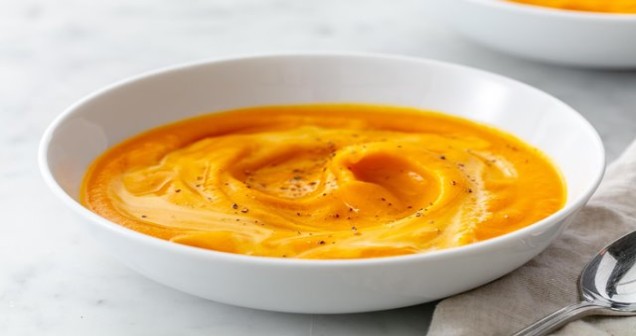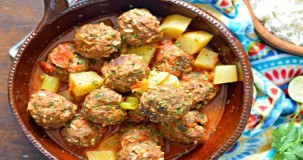 Lifestyle
Lifestyle
 Blogs
Blogs
 Blogs
Blogs
 Blogs
Blogs
 Baby
Baby
 Baby
Baby
 Baby
Baby
 Baby
Baby
 Lifestyle
Lifestyle
Are all pumpkins good for soup? Discover the best pumpkins for soup in this comprehensive guide. From the classic sugar pumpkin to lesser-known varieties, find the perfect pumpkin for your next cozy bowl of soup.

The short answer is yes, all pumpkins can be used to make soup. However, some varieties are better suited for this purpose than others.
When it comes to choosing a pumpkin for soup, it is important to consider the texture, flavor, and moisture content of the pumpkin flesh. These factors can greatly impact the overall taste and consistency of the soup.
One of the most commonly used pumpkins for soup is the classic carving pumpkin, also known as the Connecticut field pumpkin.
This type of pumpkin has a mild flavor and a smooth, creamy texture when cooked. Its flesh is also relatively high in moisture, which makes it ideal for creating a thick and velvety soup. The carving pumpkin is readily available in most grocery stores and farmer's markets, making it a convenient choice for soup-making enthusiasts.
Another excellent option for soup-making is the sugar pumpkin, also known as the pie pumpkin.
These smaller-sized pumpkins are widely recognized for their sweet, tender flesh, which lends itself perfectly to creating flavorful and aromatic soups. Sugar pumpkins have a lower moisture content than carving pumpkins, which results in a denser and creamier consistency when cooked. Their rich flavor makes them a popular choice for pumpkin-based soups, such as pumpkin bisque or spiced pumpkin soup.
If you are looking for a pumpkin variety with a more robust and nutty flavor, the Kabocha pumpkin might be the right choice for you.
Kabocha pumpkins, also known as Japanese pumpkins, have a vibrant orange flesh that is both sweet and savory. Their naturally dry and starchy texture makes them perfect for thick and hearty soups. When cooked, Kabocha pumpkins become incredibly soft and tender, adding a rich and distinctive taste to any soup recipe.
An often overlooked pumpkin variety for soup-making is the butternut squash.
While technically not a pumpkin, butternut squash shares many characteristics with traditional pumpkin varieties. Its bright orange flesh has a slightly sweet and nutty flavor, and its smooth texture becomes velvety and luscious when cooked. Butternut squash is particularly popular for creamy bisques and smooth vegetable soups, where its rich flavor can truly shine.
It is important to note that different pumpkins may require slight adjustments in cooking time and seasoning to achieve the desired flavor and consistency.
Additionally, the choice of spices and other ingredients can greatly enhance the taste of your pumpkin soup. Common additions include cinnamon, nutmeg, ginger, and garlic, which complement the natural sweetness of the pumpkin. Fresh herbs, such as thyme or sage, can also add a savory flair to your soup.
In conclusion, while all pumpkins can be used for soup-making, certain varieties are better suited for this purpose due to their taste, texture, and moisture content.
The classic carving pumpkin and the sugar pumpkin are reliable choices for creating flavorful and velvety soups, while the Kabocha pumpkin offers a more robust and nutty flavor. Butternut squash, although not a pumpkin, is another excellent option for creamy and rich soups. With the right ingredients and cooking techniques, you can transform any pumpkin or squash into a delicious and comforting bowl of soup.
No, not all pumpkins are suitable for soup. Some pumpkin varieties, like the carving pumpkins, have more stringy and watery flesh, which may not result in a creamy and flavorful soup. It is best to use the smaller varieties of pumpkins, also known as sugar pumpkins or pie pumpkins, for making soup.
2. Can I use canned pumpkin for soup?Yes, you can use canned pumpkin for making soup. Canned pumpkin is often made from the smaller, sweeter pumpkin varieties, making it a great option for soup. Just ensure that you are using pure canned pumpkin without any added spices or sugar.
3. Do I need to remove the seeds before making pumpkin soup?Yes, it is recommended to remove the seeds before making pumpkin soup. The seeds can add an unwanted texture to the soup. However, you can save and roast the pumpkin seeds separately for a delicious and crunchy snack.
4. Can I use frozen pumpkin for soup?Yes, you can use frozen pumpkin for making soup. Freezing the pumpkin can help preserve its flavor and texture. Just make sure to thaw the pumpkin before using it in your soup recipe.
5. How do I know if a pumpkin is ripe enough for soup?A ripe pumpkin for soup should have a deep and consistent orange color. The skin should be firm and free of blemishes or soft spots. Additionally, when you tap the pumpkin, it should sound hollow, indicating that it is fully matured.
 LATEST ARTICLES
LATEST ARTICLES

Am I a Millennial or Gen Z?

Am I bloated or fat?

Am I dehydrated or sick?

Are babies born with ADHD?

Are babies born geniuses?

Are babies born in September smarter?

Are babies actually talking when they babble?

What are 3 signs of a toxic relationship?

What are 10 signs of a toxic relationship?

Am I in a toxic relationship?

How do you find red flags in a toxic relationship?

Am I bloated or pregnant?

Am I bloated or showing at 9 weeks?

Am I bloated or showing at 10 weeks?

Am I bloated or showing at 7 weeks?

Are acai bowls just smoothies?

Are all pumpkins good for soup?

Are acai bowls healthy or unhealthy?

Are air fried potatoes healthy?

Are albondigas the same as meatballs?

Am I being Gaslit or am I the gaslighter?

Am I bloated or did I gain weight?

Am I allergic to vodka?
 POPULAR ARTICLES
POPULAR ARTICLES

Am I a Millennial or Gen Z?

Am I bloated or fat?

Am I dehydrated or sick?

Are babies born with ADHD?

Are babies born geniuses?

Are babies born in September smarter?

Are babies actually talking when they babble?

What are 3 signs of a toxic relationship?

What are 10 signs of a toxic relationship?

Am I in a toxic relationship?